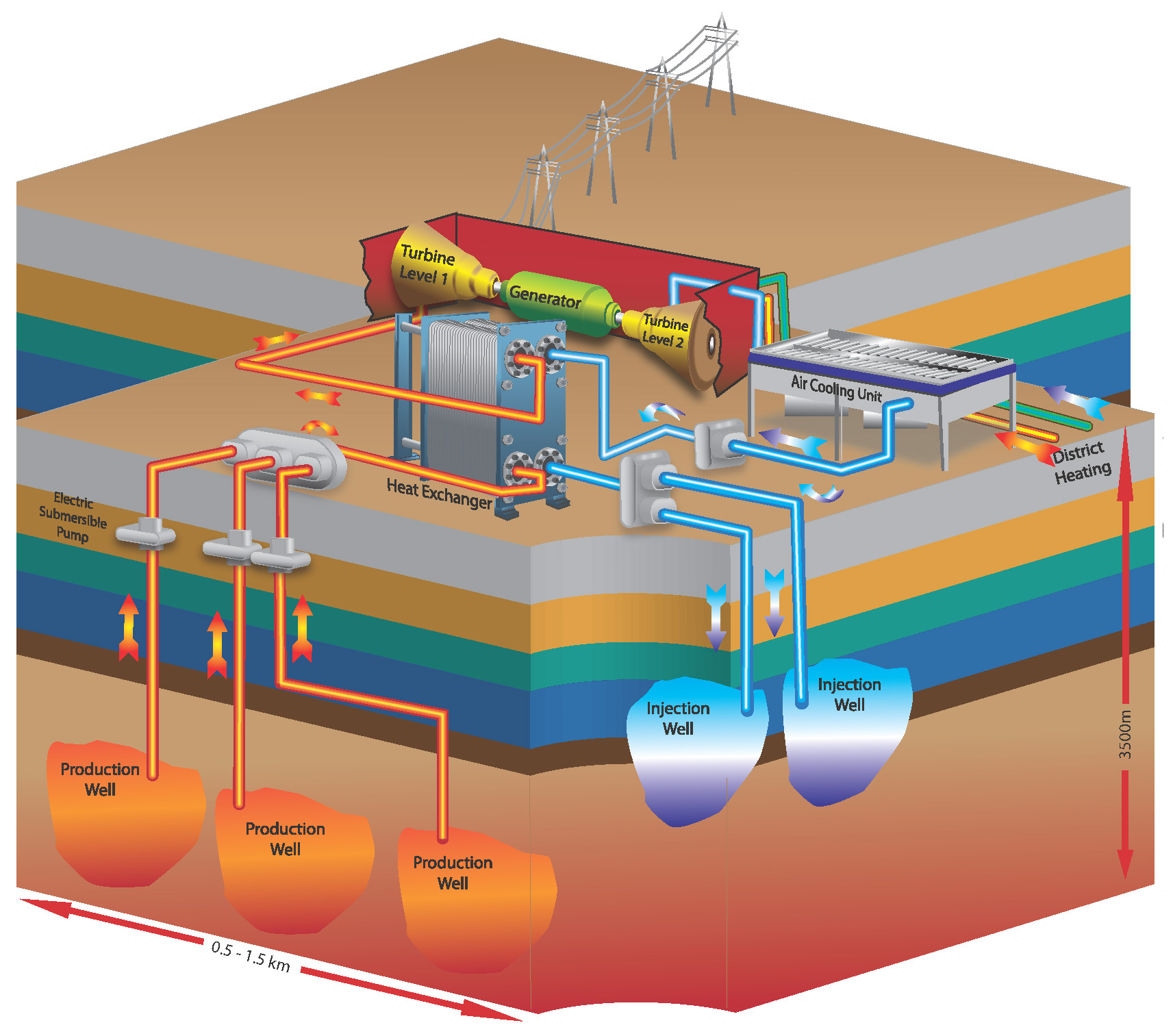Lead Proponent: Deep Earth Energy Production Corp.
Location: Saskatoon, SK
ecoEII Contribution: $ 1,042,242
Project Total: $ 2,084,485
Project Background:

DEEP Geothermal Proces
Text version
Deep Earth
A 3D model of a geothermal process showing the flow from production wells, through a heat exchanger, turbine, generator unit, air cooling unit and finally out into injection wells.
Geothermal power is a fairly new endeavor in Canada, where there are currently no operating plants. However, the technology is utilized globally, and Canada’s geothermal resources have the potential to contribute significantly to country’s total electricity generation. Geothermal electrical energy is a clean, renewable, and proven source of power that can provide base load power (24 hours a day, 365 days a year), has low emissions and a relatively small environmental footprint per unit output.
DEEP Earth Energy Production is a company based in Saskatchewan, with a vision to be the province’s first geothermal power producer. The company was awarded $1.042M from ecoEII towards a Front End Engineering and Design (FEED) study to determine the feasibility of a demonstration geothermal power production project in the Williston Basin, southeast Saskatchewan. DEEP has secured rights and interests from the top of the Winnipeg Formation to the base of the Deadwood Formation (part of the Williston Basin stratigraphy) through a Lease of Space Agreement with Saskatchewan’s Ministry of Energy and Resources.
Results:
The proposed project involved the design of a 10 MW gross geothermal power plant with an expected net output of 5 MW. The plant would produce power by taking hot brine from the Deadwood and Winnipeg Formations, via 3 production wells drilled to a depth of 3200 m. Based on reservoir studies performed, the brine was expected to be dense (1.21 kg/L and 120⁰C at the surface), but was not expected to have precipitates or salting out effects when cooling down.
A well bore profile for the production well was developed using the information from the reservoir studies coupled with a hydrogeological flow model. The dynamic water level for the three wells was estimated to be low, at 650 m below grade. With a dense brine and relatively low dynamic water level, it was determined that an electrical submersible pump (ESP) would be used to bring the hot brine to the surface.
The brine would then be pumped into an Organic Rankine Cycle (ORC) binary plant to produce an estimated 10 MW of electrical power. Since the internal parasitic loads of the power plant was expected to be 2 MW, and with the 3 ESPs anticipated to have a total load of approximately 3 MW, the net power output of the plant was expected to be 5 MW.
The study concluded that the project would be viable from a technical perspective. Furthermore, the study identified and examined environmental considerations for the project, and established cost estimates from proof of concept to commissioning. It was determined that the demonstration project would be financially viable and that potential environmental effects could be mitigated with best practice measures.
Benefits to Canada:
The study results, analysis performed and data gathered all contribute to a greater understanding of the technical and financial viability of producing power from low temperature geothermal reservoirs across Canada. Development of this project would attract capital into the region, and its completion would kick-start a brand new industry in Canada.
Next Steps:
The next phase in the project would be to drill and test a proof of concept production well and an injection well to verify the reservoir characteristics. The wells will be flow tested to determine the dynamic water level and brine samples will be analysed.